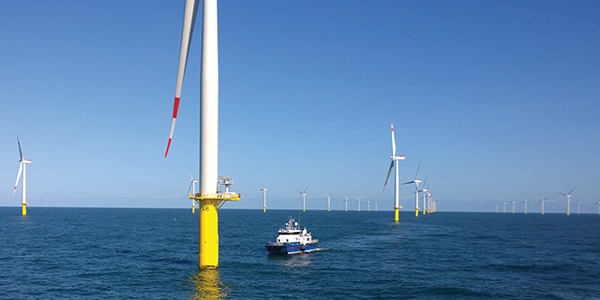By Michael Kuser
Avangrid earnings jumped more than 25% year-over-year in the third quarter, mainly driven by increased gross margins for renewables and new transmission rate plans.
The company posted net income of $125 million for the quarter ($0.40/share) versus $95 million ($0.32/share) a year earlier. For the first nine months of 2018, net income was $476 million ($1.54/share) against $458 million ($1.48/share) in the first three quarters of 2017.
During an analyst call Wednesday, the company also said it foresees solid future growth based on its role in developing the largest offshore wind project in the country. (See Mass., R.I. Pick 1,200 MW in Offshore Wind Bids.)
Avangrid’s 800-MW Vineyard Wind offshore project signed 20-year contracts with the Massachusetts Department of Public Utilities in August.
CEO James P. Torgerson said during the call that subsidiary Central Maine Power had obtained FERC approval for transmission service agreements for its New England Clean Energy Connect (NECEC) ahead of schedule. The project would bring up to 1,200 MW of Canadian hydropower to Massachusetts.
“Both Vineyard Wind and NECEC are on track, and we expect all permits and final approvals in 2019,” he said.
Torgerson said Maine regulators were close to granting NECEC a certificate of public convenience and necessity, but the state’s Public Utilities Commission on Friday said they would suspend hearings related to the project. (See related story, Maine PUC Move Poses Hurdle for NECEC.)
Significant Opportunities
The Vineyard project, a 50/50 partnership with Copenhagen Infrastructure Partners, calls for development in two phases. The first 400 MW will be operational at the end of 2021 for $74/MWh, with annual escalations of 2.5%, while the second phase, slated for a 2022 operations date, has a price of $65/MWh, again with 2.5% annual increases over 20 years.
Torgerson said both phases are eligible for investment tax credits and capacity payments. The company is looking at “significant additional opportunities for offshore wind” in Massachusetts, New York, Rhode Island and farther south, he said. Avangrid has a lease on 122,000 acres 24 miles offshore Kitty Hawk, N.C., enough for 2.4 GW of wind, and has secured a position in PJM’s queue to interconnect three planned 800-MW projects near Virginia Beach, Va. The development process “is moving a little quicker now” because of Virginia’s plans to solicit up to 2 GW of offshore wind by 2028, Torgerson said.
Avangrid also expects to bring 970 MW of onshore wind and solar into operation by the end of 2019 and estimates 2.7 GW of renewables development through 2022.
Regulatory Update

Torgerson also took note of FERC’s Oct. 16 ruling changing how it sets return on equity rates for transmission owners. (See FERC Changing ROE Rules; Higher Rates Likely.) The commission set a base ROE for Avangrid and other New England Transmission Owners of 10.41%. “The new ROE cap including incentives … would go up to 13.8%,” Torgerson said. “If this goes ahead as laid out by the commission, we would see a slight benefit to the higher ROE cap versus the lower ROE base. … So, 64% of CMP’s and [United Illuminating’s] transmission is currently capped at the 11.74%, and we get a benefit by going above that.”
The Maine PUC also recently found that CMP acted reasonably in preparing for and responding to the major storm that occurred in October 2017, and at the same time ordered the utility to file a rate case by Oct. 15.
“We asked for a $24 million rate increase; however, there won’t be any rate impact to customers as we use some of the tax reform liabilities and file that back to customers, so they won’t see a rate increase; yet we will get the ability to earn another $24 million in revenue at least,” Torgerson said.
Quotes courtesy of Seeking Alpha.

